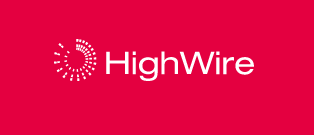Six ways to improve your journal’s impact

.
Last month, following the publication of Clarivate’s 2019 Journal Impact Factor report, HighWire founding director John Sack took a look at some of the uses and misuses of the impact factor (Is Impact Really a Factor?) and how important citations really are in a search-engine driven world.
In this article, we will take a look at ways to improve impact, especially the less obvious types of increased impact and visibility such as search-engine discoverability, altmetrics and wider societal impact.
1. Ensure metadata is up-to-date and machine readable
Most modern publishers are already well-versed in the importance of metadata. When tackling your metadata, keep in mind the “3 Cs”: consistency, correctness and completeness. Ensuring you have structured taxonomies in place and up-to-date metadata will make it easier for both readers and machines to find, parse, and correctly identify your content. Our recent project with McGraw-Hill Education is a great example of enabling powerful discovery through complex taxonomies.
Metadata is so important that when HighWire and Google worked together 15 years ago to index the scholarly literature in Google, we jointly developed what Google called ‘The HighWire Tag Set’ which became the metatags which Google Scholar now recommends for all publications to be consistently, correctly, and completely indexed.
Machine-readability is becoming increasingly important, as it not only powers search-engine and AI driven discovery (such as Google Scholar, PubMed), but will also enable future types of discovery or content use, including voice search discovery, content syndication, and automated distillation of key takeaways from articles. Which takes us on to number 2...
2. Improve discoverability and cross-pollination of content
Properly tagged and semantically enriched content not only becomes more discoverable (serving both internal users and external consumers), but also develops powerful associability. This means it can be easily or automatically grouped into collections, or repurposed by you and by your readers in new and effective ways. You can surface ‘related content’ that will further aid the research process, tailor recommendations at a personalised level, cross-sell or up-sell subscription content from open access journals, and (at a business level) even create new revenue streams and product innovation through value-add research tools. What does this mean? It means more people viewing and engaging with your knowledge network of associated articles and content - and greater overall impact.
3. Keep an eye on impact metrics year round - not only when the Journal Impact Factor report is released!
Did your Journal Impact Factor ranking come as a surprise to you this year? The truth is, if you’re waiting months and months to learn whether recent changes in editorial practice or approach are having a positive effect, then it’s already too late to capitalise on what’s working. Tools such as Scopus’ CiteScore are constantly updated, though focus only on journal citations. By investing in tools such as HighWire’s award-winning Impact Vizor, you can get real-time, meaningful insight into what’s working not just at a journal level, but at a more granular article or even collection level. Keeping a close grip on real-time metrics and analytics gives you early indicators into future citability and helps drive more informed decision making.
4. Capitalise on trends and hot topics
By analysing the performance of your content on a real-time basis, it becomes much easier to spot growing trends or hot topics, whether from growing interest in a particular discipline or current news coverage. This guides editorial on what areas to commission further content or accept article submissions in, or which existing articles to spotlight, market or even drop paywalls on for a limited period - all ultimately drawing more new and returning readers to your site.
5. Analyse your rejected articles and their resulting impact in competitive journals
Are you inadvertently giving the advantage to competitors by repeatedly rejecting certain article topics or institutional authors? Impact Vizor allows you to benchmark your article performance against that of competitors in similar disciplines, as well as seeing where your rejected articles end up and the amount of citations they get. This type of contextual analysis gives you the tools to make better decisions around commissioning, and prioritise content with greater future-potential.
6. Identify underperforming articles, article types, and topics - and your star performers
Do your editors know which articles are not cited, even two years after publication? Or which types of articles get fewer citations than average? Or which article topics’ interest levels are trending? Impact Vizor can give you insight into all of these.
The key is to be able to ‘slice and dice’ the impact data using your article types and topics. Unlike other analytics tools and services, Impact Vizor allows you to do this using your own content, rather than generic article topics and types.
Of course, none of these efforts guarantees a higher Impact Factor. But as John Sack said in his previous blog, “while citations are clearly important to researchers, they are not the only metric of impact. Stakeholders care about additional types of impact, including societal impact…but even in a search-engine driven world, citations are still important.” By developing an ongoing analytical program of effort, you can minimize surprises when the Impact Factor report is released, and maximize discovery, engagement and impact of your journal content by making more informed, insightful editorial decisions.
To find out more about how Impact Vizor can provide you with ongoing, powerful data analytics and visualisation, download our product sheet or get in touch via the HighWire website.






